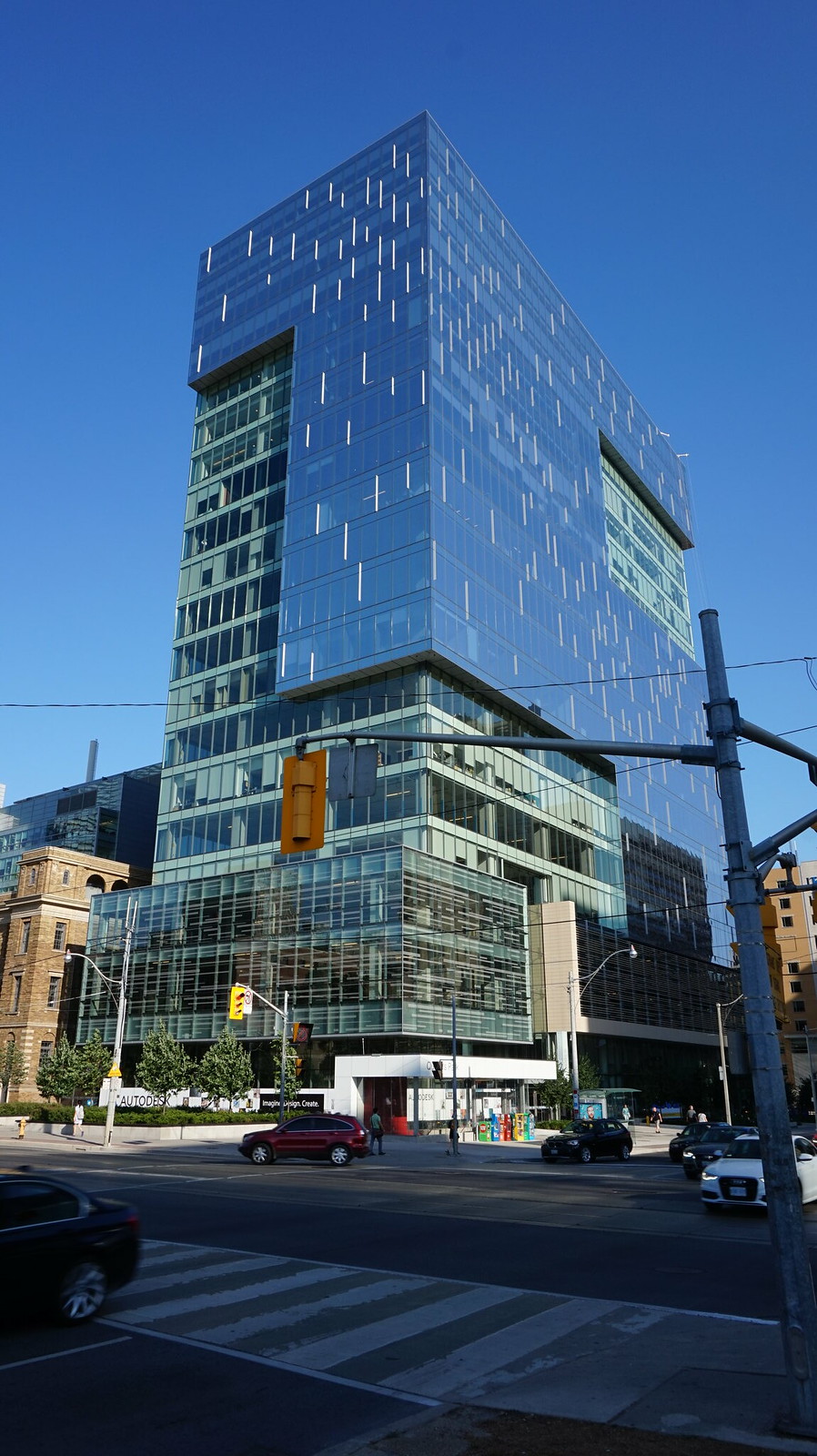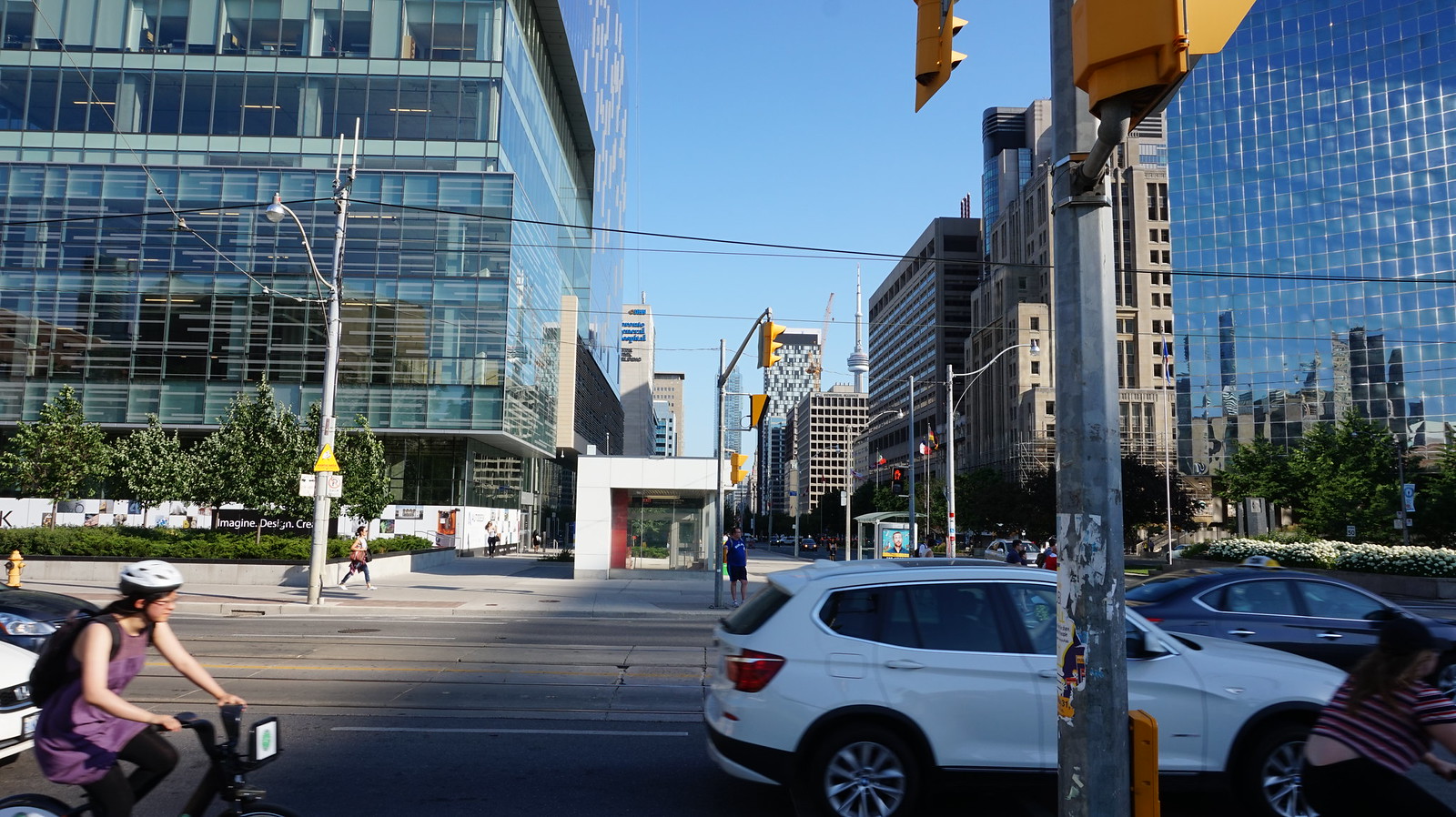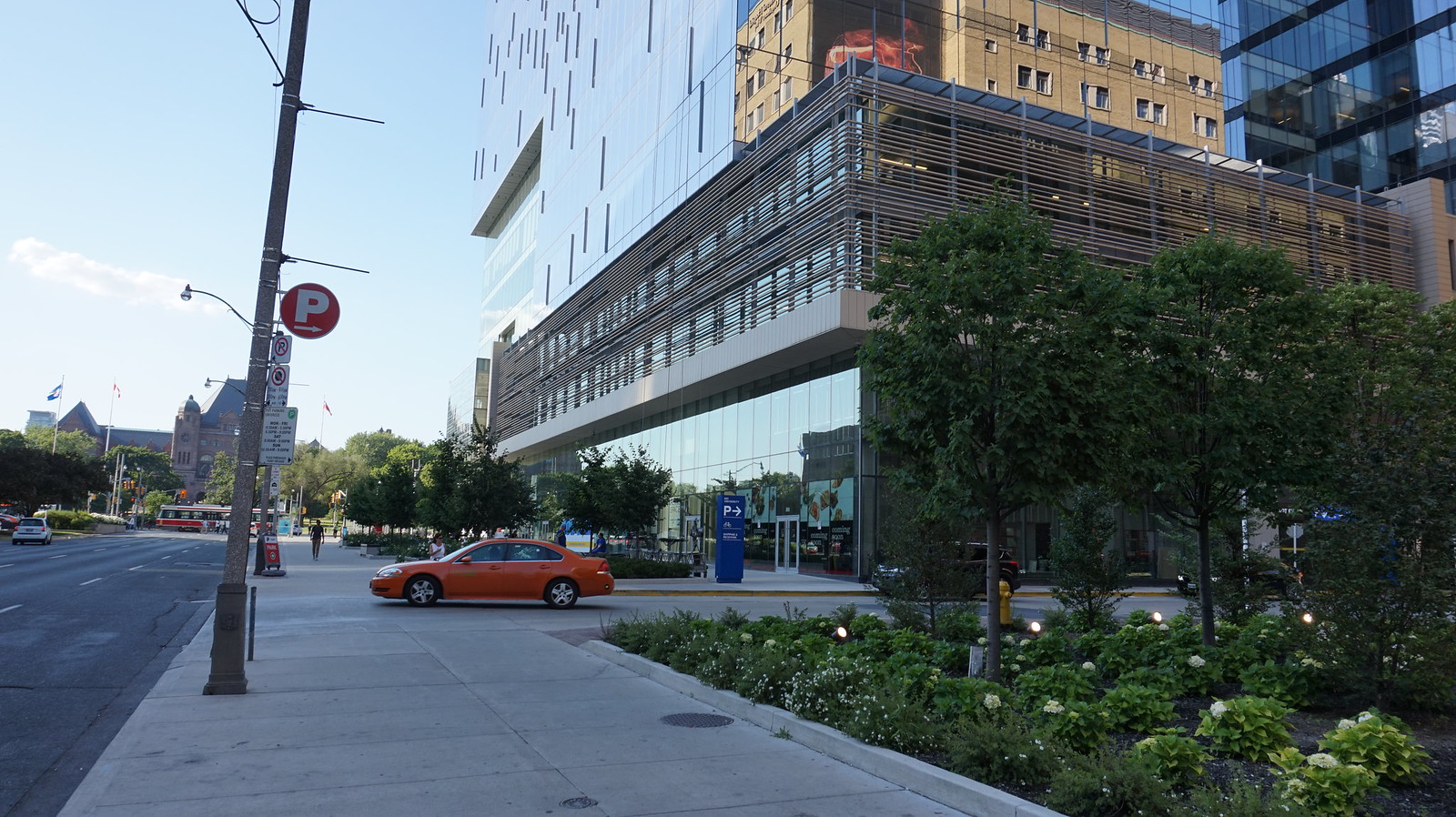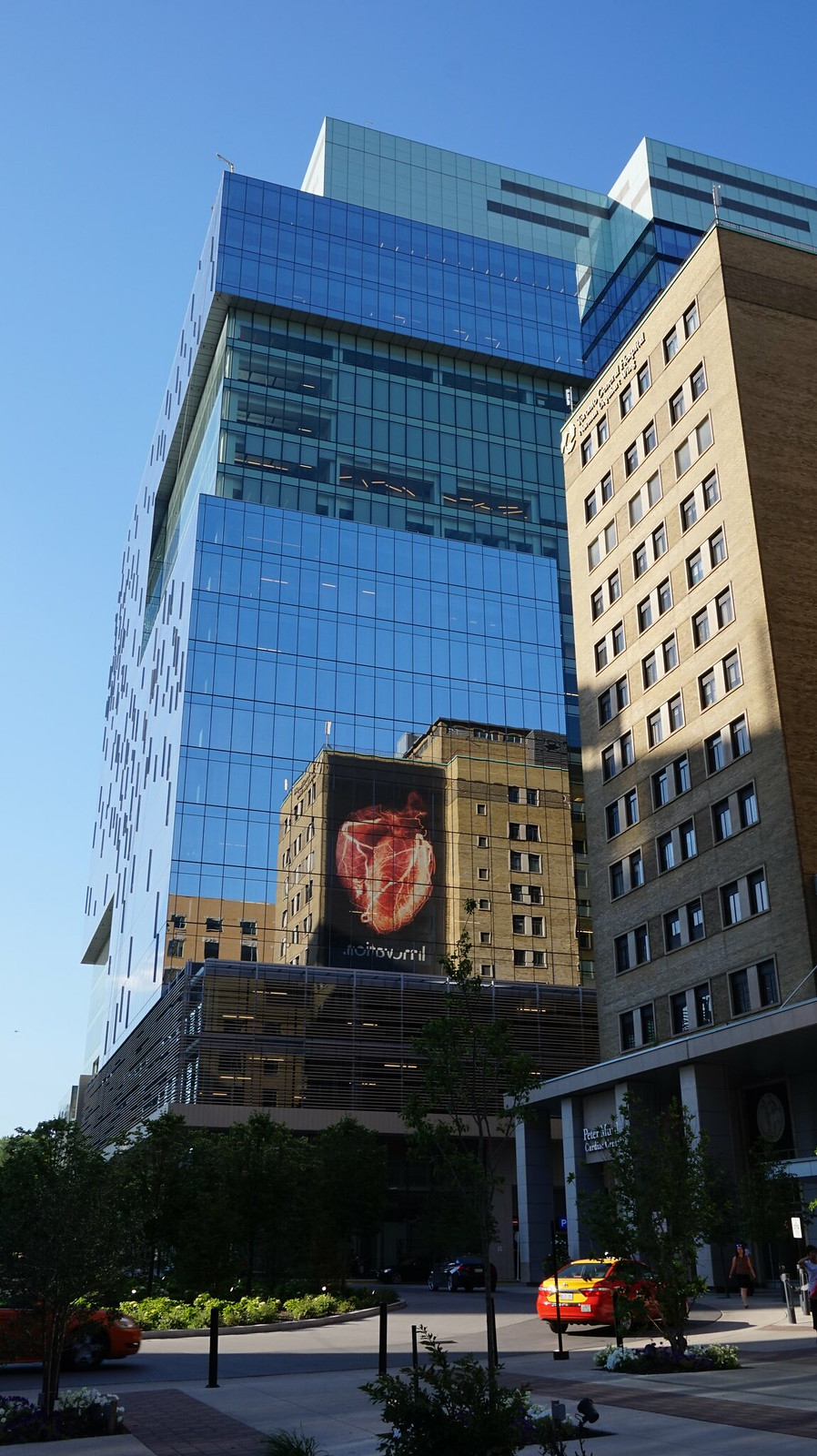You are using an out of date browser. It may not display this or other websites correctly.
You should upgrade or use an alternative browser.
You should upgrade or use an alternative browser.
Student99
Active Member
any idea what retail is coming here?
"aroma" signs are up in one unit.
Another unit has "for lease" signs still.
Beside that, there's a space that seems to be three units joined but NO "coming soon" signs... they even removed the streetfront doors from two of the units. Something moderately big coming?
Random guess: yet another Shoppers Drug Mart. The one at LuCliff Place will close soon anyways.
"aroma" signs are up in one unit.
Another unit has "for lease" signs still.
Beside that, there's a space that seems to be three units joined but NO "coming soon" signs... they even removed the streetfront doors from two of the units. Something moderately big coming?
Random guess: yet another Shoppers Drug Mart. The one at LuCliff Place will close soon anyways.
vini007
Active Member
Some people worried about the empty space that mars has.. as i said b4 give time all will be full it's a prime location.
It doesn't seem to have become a disaster after all.
Globe and Mail
Globe and Mail
MaRs to repay government ahead of schedule
There’s a happy ending in sight for one of the many political headaches plaguing the Ontario government: the taxpayer-funded bailout of the MaRS Discovery District tower building project. The government is set to be repaid “the vast majority” of the $224-million it lent to the innovation-focused charity to complete construction this year – three years ahead of schedule, MaRS chairman Gord Nixon said.
“The province is going to get 100 per cent of its money back plus interest plus everything else,” said Mr. Nixon, the former Royal Bank of Canada CEO. “The story [for MaRS] going forward will be very different … simply because the real estate will be a given rather than part of the story.”
Several recent developments have improved the fate of MaRS’ tower project. The 20-storey, 780,000-square-foot building is 90 per cent leased, attracting such tenants as Facebook, Airbnb and Autodesk, public-sector organizations including the Ontario Institute for Cancer Research and University of Toronto (now a part owner of the building), and several venture capitalists. Startups on-site include League, the latest from Kobo co-founder Mike Serbinis.
“There is a complete energy here that’s changed,” said financier Daniel Klass, who moved his Klass Capital into MaRS seven months ago. Canadian Imperial Bank of Commerce, Moneris and Manulife have also put money and employees into MaRS.
When the building is fully occupied next year, it will generate more than $15-million in annualized net operating income, informed sources told The Globe and Mail. This has increased the tower’s appeal to private lenders. Real estate advisory firm Altus Group recently assessed the building’s value at $513-million, well above the almost $400-million the Ontario government committed to complete it, sources said. It doesn’t hurt that the tower is located in a corridor with a 1.4-per-cent vacancy rate and where average Class A office rental rates have increased 20 per cent since 2011, according to CBRE Canada.
With assessment in hand, MaRS and adviser Murray & Co. are working to refinance the property by selling close to $300-million in 20-year mortgage bonds, using the proceeds to repay most of the government loan. Term sheets were received last month from a handful of private insurance company lenders
DarkSideDenizen
Senior Member
Well, that's good news. Great building too, one of the best in this construction cycle.
Riverdale Rink Rat
Senior Member
My daughter is interning for one of the labs, Northern Biologics, in this cluster, and it's rocking and rolling. She's loving the experience, MaRS is apparently a great place to work as a lab rat.
TheKingEast
Senior Member
PMT
Senior Member
Starbucks and RBC have opened at the podium. No Aroma yet though.any idea what retail is coming here?
"aroma" signs are up in one unit.
Another unit has "for lease" signs still.
Beside that, there's a space that seems to be three units joined but NO "coming soon" signs... they even removed the streetfront doors from two of the units. Something moderately big coming?
Random guess: yet another Shoppers Drug Mart. The one at LuCliff Place will close soon anyways.
AlvinofDiaspar
Moderator
Good article about the spinoffs that could impact the neighbourhood in a positive way.
Can MaRS Discovery District colonize Toronto surroundings?
Can the MaRS Discovery District make Toronto smarter?
The question comes about after MaRS released a new report detailing how tech companies that once would have set up in research parks on the edges of cities are heading downtown.
MaRS finds it is moving core-ward because today’s breakthrough technologies come about in a clumping scenario as entrepreneurs need to collaborate with people working in diverse fields.
According to Joe Greenwood, co-author of the report Rise of the Hub: How Innovation Is Moving Downtown and executive lead for data at MaRS, the urban innovation hub is already having that effect on its immediate surroundings.
He predicts the success of MaRS in attracting life sciences and technology companies to its complex will result in a mini building boom in its immediate area. That would come about in large part because MaRS is bursting at the seams and has trouble taking on any new tenants.
Not just any real estate will suffice and much of the real estate around it is unsuitable for would-be tech hub residents.
“Here you are trying to design a space that is commercially viable and generates other benefits that enhance that activity. Because you want to attract different people, you want them to interact in different ways, you want other investors to follow you and build beside you.
Toronto’s future tech hub
Greenwood sees the MaRS effect being far-reaching.
“We expect that large areas around MaRS also get redeveloped. U of T is going to be redeveloping large swaths of the real estate around us because they are a big owner and because we are full and to attract other life sciences, high tech, AI-intensive type companies.”
The real estate stock around MaRS does not fit the hyper-functional, high-electrical power requirements today’s new technology companies demand.
Creating such an expending high-tech, innovation hub has to be intentional, Greenwood says, and notes MaRS is well on its way to accomplishing the feat.
“Taking MaRS as an example, now you have put this unique mix, a very dedicated space that is starting to attract a very different type of company to this part of the city,” Greenwood said. “What is the opportunity to start to regenerate other things adjacent to it?”
He expects the MaRS real estate effect to become apparent over the next five to 10 years.
Study says downtown support necessary
The main premise of the MaRS report is that when innovation was largely confined to information technology it could be carried out on a city’s outskirts. Today, it spans several sectors and needs a network of support only available in a downtown environment.
That innovation is taking place in areas such as digital health, bio-informatics, financial technology (fintech) and the internet of things.
Researchers in all these fields need the facilities offered by universities and major hospitals; they need to mingle and interact with others doing work that complements their own; and they need people who can help to finance early stage work and, if ready to bring that work to the market.
“Most of all, they need diverse, international talent — the kind of people increasingly drawn to large cities around the world,” Greenwood said.
So where is it happening today? The logical places: Boston, Beijing, New York, London, Stockholm and San Francisco.
But it also occurring lso in Toronto, where the MaRS Discovery District has sprung to life. The trend is also visible in Montreal and Vancouver.
Three largest cities have greatest innovative potential
The MaRS report finds Canada’s three biggest cities — Toronto, Montreal and Vancouver — have the most potential to be innovative smart cities followed by Calgary, Edmonton and Ottawa. These cities are home to 40 per cent of Canada’s population and more than half of the GDP.
MaRS notes Brookings Institution’s Redefining Global Cities report classes Toronto in a group of “international middleweights,” a collection of mid-sized cities that includes Montreal and Vancouver as well as Melbourne and Sydney in Australia and Köln-Düsseldorf in Germany.
Toronto’s rankings among the 123 cities studied are solid on key measures of innovation including foreign direct investment per capita (15th), university research impact (33rd) and venture capital investment per capita (31st).
MaRS contends Toronto’s place in the international ranking “appears to be about right.” It’s a long way from the “global giants” like New York and London, but comparable to cities like Berlin and Madrid. Toronto has some important assets, and should aspire to be more than a “middleweight.”
Not only is its talent more diverse and youthful than that of many others, Toronto now ranks third in consultant PwC’s annual Cities of Opportunity report, behind London and Singapore, but ahead of Paris, Amsterdam and New York.
The report calls on government to nurture Toronto’s innovation district, “ one of the strongest in the world.”
It includes more than seven million square feet of facilities “crammed into a handful of city blocks in the downtown, creating one of the highest concentrations of research institutions in the world.”
It includes the University of Toronto’s main campus, more than 30 medical and related research centres — including Princess Margaret Cancer Centre and the Hospital for Sick Children — as well as the MaRS Centre.
The report concludes: “Governments, corporations and research scientists alike recognize that to compete on the world stage, they must invest in these urban clusters of activity.”
Can MaRS Discovery District colonize Toronto surroundings?
Can the MaRS Discovery District make Toronto smarter?
The question comes about after MaRS released a new report detailing how tech companies that once would have set up in research parks on the edges of cities are heading downtown.
MaRS finds it is moving core-ward because today’s breakthrough technologies come about in a clumping scenario as entrepreneurs need to collaborate with people working in diverse fields.
According to Joe Greenwood, co-author of the report Rise of the Hub: How Innovation Is Moving Downtown and executive lead for data at MaRS, the urban innovation hub is already having that effect on its immediate surroundings.
He predicts the success of MaRS in attracting life sciences and technology companies to its complex will result in a mini building boom in its immediate area. That would come about in large part because MaRS is bursting at the seams and has trouble taking on any new tenants.
Not just any real estate will suffice and much of the real estate around it is unsuitable for would-be tech hub residents.
“Here you are trying to design a space that is commercially viable and generates other benefits that enhance that activity. Because you want to attract different people, you want them to interact in different ways, you want other investors to follow you and build beside you.
Toronto’s future tech hub
Greenwood sees the MaRS effect being far-reaching.
“We expect that large areas around MaRS also get redeveloped. U of T is going to be redeveloping large swaths of the real estate around us because they are a big owner and because we are full and to attract other life sciences, high tech, AI-intensive type companies.”
The real estate stock around MaRS does not fit the hyper-functional, high-electrical power requirements today’s new technology companies demand.
Creating such an expending high-tech, innovation hub has to be intentional, Greenwood says, and notes MaRS is well on its way to accomplishing the feat.
“Taking MaRS as an example, now you have put this unique mix, a very dedicated space that is starting to attract a very different type of company to this part of the city,” Greenwood said. “What is the opportunity to start to regenerate other things adjacent to it?”
He expects the MaRS real estate effect to become apparent over the next five to 10 years.
Study says downtown support necessary
The main premise of the MaRS report is that when innovation was largely confined to information technology it could be carried out on a city’s outskirts. Today, it spans several sectors and needs a network of support only available in a downtown environment.
That innovation is taking place in areas such as digital health, bio-informatics, financial technology (fintech) and the internet of things.
Researchers in all these fields need the facilities offered by universities and major hospitals; they need to mingle and interact with others doing work that complements their own; and they need people who can help to finance early stage work and, if ready to bring that work to the market.
“Most of all, they need diverse, international talent — the kind of people increasingly drawn to large cities around the world,” Greenwood said.
So where is it happening today? The logical places: Boston, Beijing, New York, London, Stockholm and San Francisco.
But it also occurring lso in Toronto, where the MaRS Discovery District has sprung to life. The trend is also visible in Montreal and Vancouver.
Three largest cities have greatest innovative potential
The MaRS report finds Canada’s three biggest cities — Toronto, Montreal and Vancouver — have the most potential to be innovative smart cities followed by Calgary, Edmonton and Ottawa. These cities are home to 40 per cent of Canada’s population and more than half of the GDP.
MaRS notes Brookings Institution’s Redefining Global Cities report classes Toronto in a group of “international middleweights,” a collection of mid-sized cities that includes Montreal and Vancouver as well as Melbourne and Sydney in Australia and Köln-Düsseldorf in Germany.
Toronto’s rankings among the 123 cities studied are solid on key measures of innovation including foreign direct investment per capita (15th), university research impact (33rd) and venture capital investment per capita (31st).
MaRS contends Toronto’s place in the international ranking “appears to be about right.” It’s a long way from the “global giants” like New York and London, but comparable to cities like Berlin and Madrid. Toronto has some important assets, and should aspire to be more than a “middleweight.”
Not only is its talent more diverse and youthful than that of many others, Toronto now ranks third in consultant PwC’s annual Cities of Opportunity report, behind London and Singapore, but ahead of Paris, Amsterdam and New York.
The report calls on government to nurture Toronto’s innovation district, “ one of the strongest in the world.”
It includes more than seven million square feet of facilities “crammed into a handful of city blocks in the downtown, creating one of the highest concentrations of research institutions in the world.”
It includes the University of Toronto’s main campus, more than 30 medical and related research centres — including Princess Margaret Cancer Centre and the Hospital for Sick Children — as well as the MaRS Centre.
The report concludes: “Governments, corporations and research scientists alike recognize that to compete on the world stage, they must invest in these urban clusters of activity.”
AlvinofDiaspar
Moderator
There are still some developable land in the area - MSH and UHN have parking garages, and I recall there was a proposal to add more floors to Centre for Phenogenomics on Orde that didn't seem to have gone anywhere.
AoD
AoD
ProjectEnd
Superstar
And then there's this about which we've heard essentially nothing lately: https://www.google.ca/maps/@43.6586514,-79.3860641,170m/data=!3m1!1e3
Northern Light
Superstar
Lots of real estate could be in play here, as noted by posters above.
I would add to that, Sick Kids older facilities which are research and offices are rather antiquated.
Lots of vertical room here should the desire be to replace these.
Though some room on site needs to be preserved for the standard hospital redevelopment and expansion.
There's also the Green P space on McCaul
***
On a related note, does anyone know of any plans to address the space crunch at PMH?
They are overfull, as I understand it, looking at adding to the operations they do; but they are already short of space for both in patient and out patient services.
Is that building designed to add any more floors?
I would add to that, Sick Kids older facilities which are research and offices are rather antiquated.
Lots of vertical room here should the desire be to replace these.
Though some room on site needs to be preserved for the standard hospital redevelopment and expansion.
There's also the Green P space on McCaul
***
On a related note, does anyone know of any plans to address the space crunch at PMH?
They are overfull, as I understand it, looking at adding to the operations they do; but they are already short of space for both in patient and out patient services.
Is that building designed to add any more floors?
jje1000
Senior Member
Could be interesting if they put the parking north of the lot underground and do a massive north-south MaRS/ General Hospital expansion.And then there's this about which we've heard essentially nothing lately: https://www.google.ca/maps/@43.6586514,-79.3860641,170m/data=!3m1!1e3




